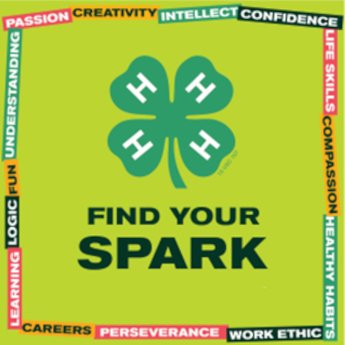Engaging every voice in 4-H: Part 1 – The hands of facilitation
Exploring the first H (hands) of facilitation for 4-H clubs .

In Michigan 4-H, volunteers are creating spaces where all youth feel heard and valued. One key to making this happen is strong facilitation—how we guide meetings, activities and conversations. This four-part series, Engaging every voice in 4-H, takes a closer look at facilitation skills through the lens of the four H’s: head, heart, hands and health.
To start our series, Michigan State University Extension provides these tips, focusing on the hands of facilitation—how we prepare, set-up, reflect and report. Facilitation isn’t just about what happens in the moment; it’s about what goes into the meeting before and after.
Preparation
Consider what materials or supplies are needed for an engaging meeting. Your facilitation toolkit might have different items but some recommended tools include: flip chart paper or poster board, painter’s tape, markers, pens, post-it notes, sticky-dots, scissors, blank paper and paper clips. Meet with your club’s youth officer team ahead of time so they feel confident and ready to take the lead. When everyone is prepared, the meeting flows more smoothly and inclusively.
Room set-up
Arrive early with the officers to set the space with intention. Can youth see and hear each other? Is the space arranged in a way that encourages participation and respect? A u-shaped arrangement can allow large group discussions where everyone can see and hear one another. Small tables with youth around each table can allow for brainstorming and discussion in smaller groups before sharing with the whole group. These simple adjustments can make a big difference in how youth engage. See the included article image for examples.
Reflection
Sometimes ideas come after youth have had time to reflect. Give them space to journal, share thoughts, or add to their 4-H record books. Doing a think, pair and share exercise allows youth to think first, share with a peer, and then share with the larger group. Use the Experiential Learning Model to help build reflection into the meeting. You, as a facilitator, should also reflect at the end of meetings and events on what went well and areas for improvement in facilitating for the group.
Reporting
How is information shared after the meeting? Are all members kept in the loop and given equal opportunity to participate? Clear, inclusive communication is vital for youth voice and engagement.
These elements—preparation, set-up, reflection, and reporting—are the working hands of a strong facilitator. They create the conditions for youth to thrive, take ownership and feel that their voice matters in 4-H.
Stay tuned for additional articles in this series exploring the heart, head and health of facilitation skills.
For additional ideas on how to support youth, consider watching the Michigan 4-H Volunteer Webinar recording, “Engaging Every Voice: Facilitation Skills for Dynamic 4-H Clubs.”



 Print
Print Email
Email


